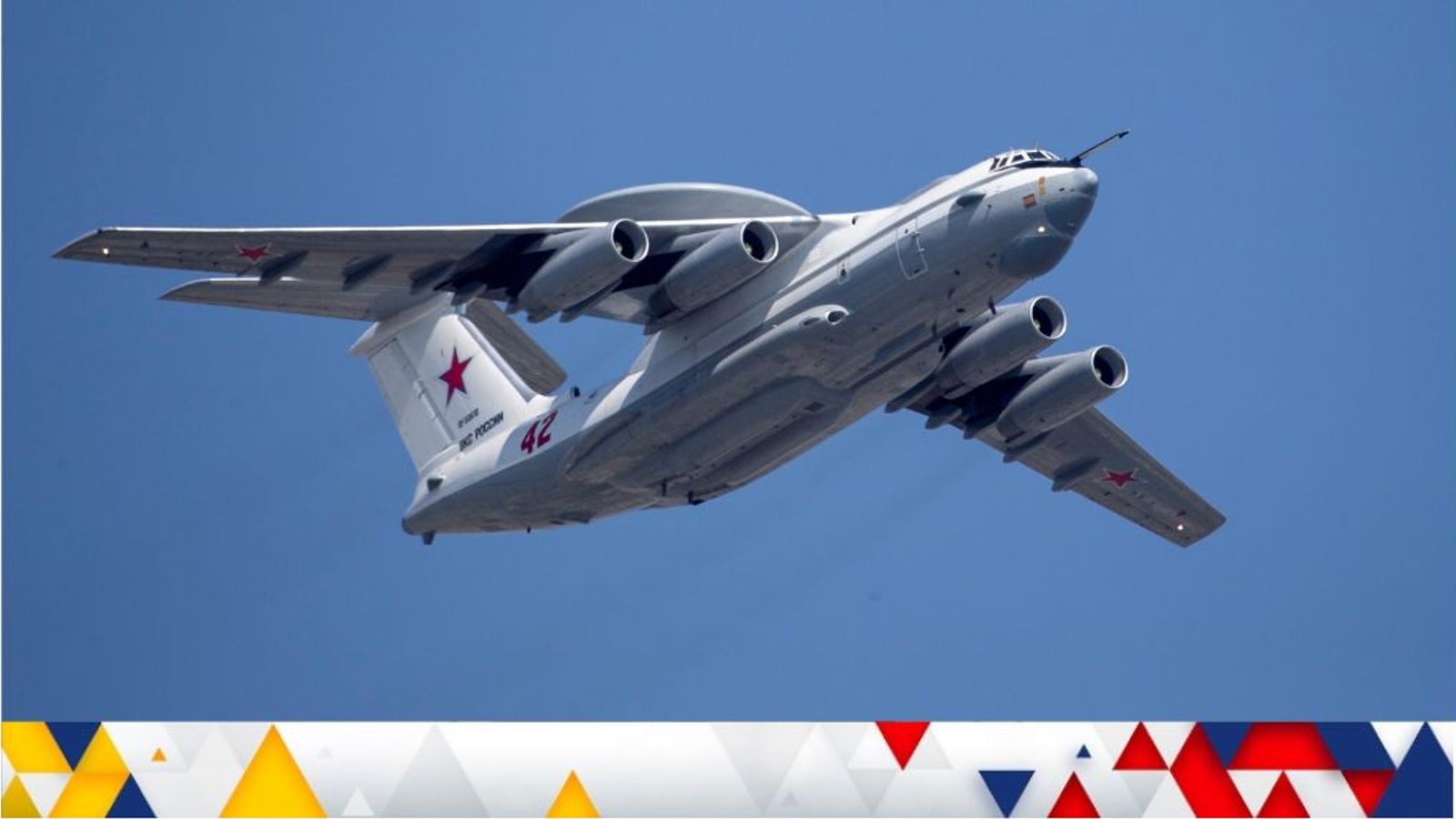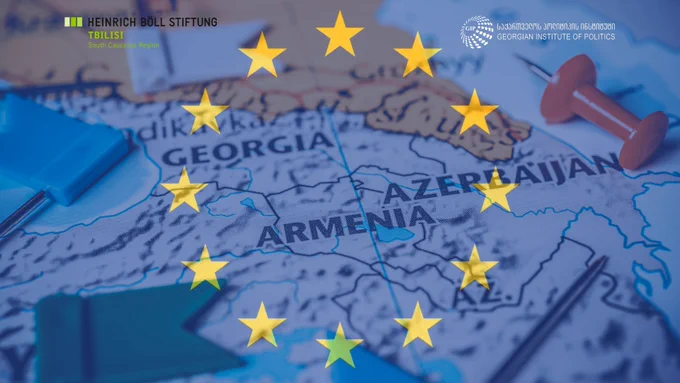Michael Novakhov’s favorite articles on Inoreader

Save
Israel and Hamas are close to agreement on a U.S.-brokered deal that would free dozens of women and children held hostage in Gaza in exchange for a five-day pause in fighting, say people familiar with the emerging terms.
The release, which could begin within the next several days — barring last-minute hitches — could lead to the first sustained pause in conflict in Gaza.
A detailed, six-page set of written terms would require all parties to the conflict to freeze combat operations for at least five days while an initial 50 or more hostages are released in smaller batches every 24 hours. It was not immediately clear how many of the 239 people believed to be in captivity in Gaza would be released under the deal. Overhead surveillance would monitor movement on the ground to police the pause.
The stop in fighting is also intended to allow a significant increase in the amount of humanitarian assistance, including fuel, to enter the besieged enclave from Egypt.
“We’ve made some progress recently and have been working hard to advance this, but it remains a volatile situation,” an administration official said Saturday on condition of anonymity. After this article was initially published, National Security Council spokesperson Adrienne Watson tweeted that there was “no deal yet but we continue to work hard to get a deal.”
The outline of a deal was put together during weeks of talks in Doha, Qatar, among Israel, the United States and Hamas, indirectly represented by Qatari mediators, according to Arab and other diplomats. But it remained unclear until now that Israel would agree to temporarily pause its offensive in Gaza, provided the conditions were right.
A spokesperson for the Israeli Embassy in Washington said late Saturday that “we are not going to comment” on any aspect of the hostage situation.
Concern about the captives — two of whom Israel said were found dead — along with the rising number of Palestinian civilian casualties have steadily increased pressure on Prime Minister Benjamin Netanyahu’s government. More than 100 countries — but, notably, not the United States — have called for a full and immediate cease-fire.
The decision to accept the deal is difficult for Israel, said one person familiar with the situation who, like others, spoke on the condition of anonymity to discuss sensitive negotiations. While there is strong domestic pressure on Netanyahu to bring the hostages home, there are also loud voices in Israel demanding that the government not barter for their release.
In public remarks, Israel has remained unyielding, while acknowledging the pressure it is under. On Friday, Israeli National Security Council head Tzachi Hanegbi told reporters that the war cabinet had unanimously agreed that a limited cease-fire could occur only after “a massive release of our hostages … and it will be limited and short, because after that we will continue to work towards achieving our war goals.”
In fiery comments Saturday, Netanyahu said the offensive would continue, even as he defended a decision last week to allow the first steady fuel transfers into Gaza since the start of the war. As Israel has pursued its Gaza offensive, it has cut off all but minimal deliveries of the food, water, fuel and medicine that the enclave’s 2.3 million people depend upon for survival. “For international support to continue, humanitarian aid is essential,” he said. “Because of that, we accepted the recommendation to bring fuel into Gaza.”
Netanyahu spoke as thousands of hostage family members and their supporters ended a five-day march from Tel Aviv to Jerusalem to demand government action, with many saying that the lives of innocent Israelis were worth any short-term deal the government has to make to secure their release.
After initial hesitation, the Biden administration, under its own domestic pressure between advocates of unstinting support for Israel’s war aims and concern over the humanitarian crisis in Gaza, has fully backed a temporary pause in the fighting.
Beginning with President Biden’s trip to Tel Aviv a week after the war began, and followed by multiple visits from Secretary of State Antony Blinken and other senior officials, the administration has pushed hard with Netanyahu to understand that it is losing the narrative high ground as more Palestinians die. The death toll in Gaza is now reportedly more than 11,000.
The administration’s highest priority, however, has been freeing the nine Americans and one permanent U.S. resident among the hostages. “I think we need a pause,” Biden said two weeks ago at a campaign event. “A pause means time to get the prisoners out.”
A week later, asked about reports he had pushed for a three-day stop in the fighting, Biden said he had asked Netanyahu for “an even longer pause.” In his news conference Thursday after meeting with Chinese President Xi Jinping, he said that the hostages were “on our mind every single day,” and that he was working on a way to “have a period of time where there’s a pause long enough” to let them be released.
U.S. officials have said they believe a pause would allow Hamas to gather the hostages and arrangements could be made to escort them safely through the battlefield. It was not clear that the Americans or other foreigners would be included in the initial tranche of releases. The hope is that if the release of women and children is successful, other groups of captives will then follow.
Brett McGurk, the White House National Security Council’s top Middle East official, is on an extended trip to the region to try to solidify the hostage release plan, including meetings in Israel and Qatar. Speaking at an international security conference Saturday in Bahrain, McGurk said that negotiations have been “intensive and ongoing.”
The freeing several weeks ago of an American mother and daughter — among the four captives who have been released since the war began — during a brief pause to allow international humanitarian workers to escort them, provided a “track” for “what we hope will be a much larger release.”
McGurk told the conference that Hamas’s release of a “large number” of the hostages, believed to total 239, “would result in a significant pause in fighting and a massive surge of humanitarian relief. Hundreds and hundreds of trucks on a sustained basis entering Gaza from Egypt.” When the hostages are released, he said, “you will see a significant, significant change.”
It was “reasonable,” McGurk said, “to pause the fighting, release the hostages, the women, the children, the toddlers, the babies, all of them.” The initial deal does not include civilian men or Israeli military personnel, a number of whom are women, among the captives.
Those remarks drew an angry response from Jordanian Foreign Minister Ayman Safadi, who interpreted them as signaling that a pause allowing humanitarian relief would come only after the hostages were released unconditionally by Hamas. “There’s a lot of negotiations,” Safadi said, “but Israel is taking 2.3 million Palestinians hostage … and denying them food and water and by this war.”
An administration official said any assumption that the United States was conditioning aid on the release of hostages had “grossly misinterpreted” McGurk’s remarks. “Any type of hostage deal would likely result in an increase of humanitarian aid,” the official said. The United States, the official noted, has continuously pushed for an increase of humanitarian assistance to civilians in Gaza.

Israel, the United States and Hamas have reached a tentative agreement to free dozens of women and children held hostage in Gaza in exchange for a five-day pause in fighting, the Washington Post reported on Saturday, citing people familiar with the deal.
As part of the detailed, six-page agreement, all parties would freeze combat operations for at least five days while “an initial 50 or more hostages are released in smaller groups every 24 hours”, the Post reported. Hamas took about 240 hostages during its Oct. 7 rampage inside Israel that killed 1,200 people.
The newspaper said overhead surveillance would monitor ground movement to help police the pause, which also is intended to allow in a significant amount of humanitarian aid.
There was no immediate comment from the White House or the Israeli prime minister’s office on the Post report.
The hostage release could begin within the next several days, according to people familiar with its the agreement.
Israel, the United States and Hamas have reached a tentative agreement to free dozens of women and children held hostage in Gaza in exchange for a five-day pause in fighting, the Washington Post reported on Saturday, citing people familiar with the deal.
As part of the detailed, six-page agreement, all…
 image/jpeg 630_360_1617786260-827.jpg
image/jpeg 630_360_1617786260-827.jpgКто стоит за организацией протестов, кофейный конфликт на Манхэттене, еврейский след в высокой моде.
#ньюйоркnewyork #протесты #chloe #кофе
00:10 Матрасы Марты Минухин на Таймс-сквер
01:45 География пропалестинских протестов
03:55 Еврейский антисионизм
06:00 Израильско-палестинский конфликт в кафе
10:40 Настоящее имя основательницы модного дома Хлое
16:16 Наказание студентов Колумбийского университета
17:10 Гитарист Гари Лукас из Вест-Виллидж
23:25 Семейная кофейня на Брайтоне
28:15 Установка главкой елки у Рокфеллер-центра
*******************
Новости, аналитика, репортажи о США, России и странах постсоветского пространства на страницах «Голоса Америки»: www.golosameriki.com.
Подпишитесь на наш канал в YouTube: http://bit.ly/37ZNXwA
Наши страницы в соцсетях:
Facebook: https://www.facebook.com/golosameriki
Instagram: https://www.instagram.com/golos_ameriki
Twitter: https://twitter.com/GolosAmeriki
VKontakte: https://vk.com/golosameriki
Telegram: https://t.me/GolosAmeriki
«Голос Америки» – самая крупная международная мультимедийная новостная организация в США, которая производит контент на 45 языках мира для более чем 280-миллионной аудитории. Созданный в 1942 году, «Голос Америки» обеспечивает всеобъемлющее, правдивое и независимое освещение новостей и событий.
«Голос Америки» производит контент для диджитал-платформ, ТВ и соцсетей. Наши новости доступны через мобильные приложения:
iOS: http://apple.co/2FP5qcD
Android: http://bit.ly/3890jjt
С помощью бесплатного стримингового приложения «Голоса Америки» VOA+ вы сможете посмотреть наши телепередачи, документальные проекты, вебкасты и авторские колонки ведущих, а также прямые трансляции важных событий в жизни США с синхронным переводом на русский язык. Приложение не содержит рекламы и не требует создания аккаунта.
Приложение VOA+ доступно для скачивания на Apple TV, планшетах (iPad) и мобильных телефонах (iPhone), а также SmarTV на платформе Android TV, планшетах и мобильных устройствах Android, Samsung TV, LG TV и Amazon Fire.
Скачать VOA+ для мобильных устройств Apple: https://apps.apple.com/us/app/voa/id1532399606
Скачать VOA+ для мобильных устройств с Android: https://play.google.com/store/apps/details?id=com.twentyfouri.bbg.voiceofamerica
«Голос Америки» финансируется американскими налогоплательщиками в рамках Агентства США по глобальным медиа.
Редакционная независимость и выполнение миссии «Голоса Америки» гарантируется законом, который защищает журналистов от возможного давления со стороны политиков или государственных чиновников.

15 Russian ships destroyed in Black Sea, Ukrainian military claims
Ukraine’s military claimed it had destroyed a total of 15 Russian naval vessels in the Black Sea since the start of the war.
Another 12 had been damaged, the military said.
Dmytro Pletenchuk, a navy spokesperson, described Ukraine as the “driver of a new type of naval warfare” having forced Russia to move its naval forces into more difficult positions, as a result of attacks by Kyiv.
The military’s operations carried out in the Black Sea so far have included strikes on the Russian Black Sea Navy headquarters in Sevastopol, and the shipyard in Kerch, which damaged a vessel that had not officially joined the fleet.
Attacks have also targeted warships near annexed Crimea, including a large landing vessel and a submarine.
Ukraine’s EU membership talks ‘at risk’ after ‘reality check’ over war support
A European Union decision to launch membership talks with Ukraine are “at risk”, a senior official said.
Amid regular assurances that the EU would support Ukraine for “as long as it takes” in the face of Russian aggression, the official said the latest discussions in the bloc over further support to Kyiv were a “reality check”.
“Leaders… were realising it’s quite expensive,” they said.
The unnamed official is involved in preparing a summit in Brussels of the EU 27 member states’ national leaders from 14-15th December.
“How do we pay for this?” the official added.
In a potential further blow, the official said there is no agreement to grant Kyiv a further €50bn (£43m).
This comes after a proposal by the bloc’s executive European Commission to revise the bloc’s long-term budget to assign another €50bn for Ukraine through to 2027 was criticised from several sides.
“We cannot allow Ukraine to go bankrupt, it’s not an option for us. But it’s not easy,” the official said.
Finland provides Ukraine with new military aid package
President Volodymyr Zelenskyy has thanked the president of Finland for providing Ukraine with a new military package.
The latest defence package is worth €100m (£87m).
This brings the total of military aid provided by Finland up to €1.5bn (£1.3bn).
“This support strengthens not just Ukraine but also the security of Finland and the rest of our Europe,” Mr Zelenskyy said in a statement on social media.
Thousands of citizens without electricity across Ukraine
Thousands of citizens across Ukraine are without electricity because of shelling and problems at power plants, the Ukrainian government has said today.
Some customers have also been left without gas due to the conflict.
Here is a breakdown of the situation in the different regions across the country:
More than 28,000 customers were cut off from electricity supply due to shelling in Kherson, the Ukrainian government said.
The government added more than 700 customers remain without power due to flooding caused by the explosion at the Kakhovka Dam back in June.
Around 122 settlements remain without power in this eastern region, the government said.
More than 17,600 customers remain without power in the region.
Power companies have restored electricity to 950 customers overnight.
Residents of one of the villages bordering Russia were also left without gas after a medium-pressure gas distribution pipeline was damaged.
Around 150 customers are without gas supply due to damage to gas equipment by a car.
Another 85 customers are without natural gas for technical reasons.
More than 13,000 customers were left without electricity in the region.
In addition, 1,000 customers remain disconnected. Power companies were able to restore electricity to 14,600 customers over the course of today.
Territorial map released by UK’s Ministry of Defence
The UK’s Ministry of Defence has today released an up-to-date territorial map of the situation in Ukraine.
It labels the locations where Russian forces have grouped, where Ukrainian troops are likely to attack and the territory taken by Russia since last year.
Ukrainian power plants need missile defence systems to operate safely – energy company boss
Ukraine’s largest private energy company has said its power plants need more missile defence systems to operate safely, according to its CEO.
“We cannot protect ourselves against ballistic missiles if we don’t have air defence systems,” Maxim Timchenko, CEO of DTEK, said today.
Hundreds of transformers, miles of cables and thousands of diesel generators have been supplied to Ukraine from Europe and members of the Soviet Union and the ex-Communist bloc since the start of the war.
This has provided critical light and heat to the country throughout winter, when temperatures regularly fall below freezing.
“I know that our president and our government have been doing everything that they can to bring the message that we need this equipment to protect our energy system,” Mr Timchenko said.
Every one of DTEK’s 13 power stations supplies energy to more than seven million Ukrainian families.
Each has come under fire from Russia, which has targeted the country’s power grid.
As a result 50% of the company’s capacity has been damaged, destroyed or occupied, causing blackouts, Mr Timchenko said.
Power units in eight out of the 13 stations have been restored and two are under repair.
In pictures: Russian delegation leaves North Korea
Earlier this week, we reported that Alexander Kozlov, Russia’s natural resources minister, was in North Korea.
During his visit, he held talks with Tok Hun, North Korea’s prime minister.
It comes as Moscow and Pyongyang have been stepping up cooperation following their leaders’ summit in September.
Having arrived in North Korea on Tuesday, Mr Kozlov and other Russian senior officials were pictured leaving the country last night.
The two countries have denied accusations from the US that they have agreed an arms deal for use in the war in Ukraine.
‘Big mistake’: Kremlin responds to Finland barricading crossings
Following on from our post below, the Kremlin has accused Finland of choosing a path of confrontation with Russia.
In reaction to Finland planning to put barricades at four crossings on its shared border, Dmitry Peskov, Kremlin spokesperson, said the country was making a “big mistake”.
Helsinki claims Moscow is to blame for an influx of migrants as tensions between the two countries deteriorated after Finland joined NATO.
“(One can) only express deep regret that the Finnish authorities have taken the path of destroying bilateral relations,” Russian state news agency TASS quoted Mr Peskov as saying.
He said the two countries always had mutually beneficial and respectful relations.
“Russia has never in modern history threatened Finland, we had no reason for any confrontation. Now they have chosen this path. From our point of view, this is a big mistake,” he said.
Finland to block border crossings to stop migrants ‘sent by Russia’
Finland has said it will place barriers at four crossings on its border with Russia from midnight.
It comes after the country accused Russian authorities of funnelling migrants to the crossing in retaliation for its decision to increase defence cooperation with the US.
The Kremlin firmly denies the accusation.
The Finnish Border Guard said barriers will go up at four of the nine crossings, to “prevent entry”.
Some 300 asylum seekers, mostly from Iraq, Yemen, Somalia and Syria, have arrived in Finland this week, according to the Border Guard.
Nearly 100 of those had entered from Russia by midday today alone, according to officials.
From Saturday asylum seekers arriving via Russia will only be allowed to hand in their applications at two northern border crossings, at Salla and Vartius, Matti Pitkaniitty, Border Guard’s head of international affairs, said.
Yesterday, Ursula von der Leyen, European Commission president, thanked the Finnish authorities for protecting the bloc’s external border.
“Russia’s instrumentalisation of migrants is shameful,” she said.
The border crossings set to be blocked at midnight include:
- Vaalimaa
- Nuijamaa
- Imatra
- Niirala
Zelenskyy praises ‘strength’ of Ukrainian troops on river bank
Volodymyr Zelenskyy has released images of Ukrainian troops on the banks of the Dnipro river.
In a post on X, formely Twitter, the Ukrainian president thanked them for “their strength and for moving forward”.
Earlier today, the Ukrainian Marines said they had a series of successes in the territory, had established several bridgeheads and carried out more operations on the eastern side of the river.
Andriy Kovalyov, general staff spokesperson, said troops managed to “knock out” Russians from their positions on the left bank of the river and consolidate there.
“One of the main goals of this combat work is to push the enemy as far as possible from the right bank to protect the Ukrainian civilian population, in particular Kherson, from constant Russian shelling,” he said.
Russia has made no immediate statements in reaction to the Ukrainian reports today.

Police were stumped when ‘crashed’ plane was found in remote Yukon, but it was placed there last summer for rescue training
When a hunter in British Columbia stumbled upon the crumpled remains of an airplane fuselage on 3 November, he reported the grim findings to the Royal Canadian Mounted Police (RCMP).
Officers were dispatched to the remote crash site to survey the wreckage and concluded that the shell of the bush plane, with no motor, wings, doors or seats, was likely more than two decades old.
 Russian soldiers have been stripped nearly naked and placed in a pit for refusing to fight. (Image: @wartranslated/X)
Russian soldiers have been stripped nearly naked and placed in a pit for refusing to fight. (Image: @wartranslated/X)
Russian soldiers have been pictured stripped nearly naked and forced into a pit near the frontlines in Ukraine exposing chaos among Vladimir Putin’s forces.
WarTranslated, an independent media project that translates content about the Russia-Ukraine war to English, posted a clip on X (formerly Twitter) that showed the soldiers in a pit.
Captions on the video, translated by the organisation, purportedly come from the spouse of one of the men in the video.
The reason given for the bizarre punishment was that the soldiers refused to fight without proper equipment. The video could not be independently verified.
According to WarTranslated, a soldier in the pit said that his commander told the lot that in order “to get out, they need to pay up 400,000 rubles (around £3,500). These particular men spent four nights in the pit completely naked.”
Russian servicemen are stripped naked and put into pits for refusing to go into meat assault without proper equipment. To get out, they need to pay up 400k rubles. These particular men spent 4 nights in the pit completely naked.
This was revealed by the wife of one of the… pic.twitter.com/t8aeqedZv5
— Dmitri (@wartranslated) November 18, 2023
The account added: “Russian servicemen are stripped naked and put into pits for refusing to go into meat assault without proper equipment. To get out, they need to pay up to 400,000 rubles.”
War Translated added that the soldiers can be thrown in the pit for no reason if “leadership doesn’t like them,” citing one soldier’s wife.
It added: “Likewise, she said that to go on leave, one needs to pay the officers 200,000 rubles in cash. Otherwise, they’ll never leave the zero line.”
Zero line is a term often used in Russia to describe the very frontline or the battlefield. At the end of the video, the captions say the soldiers could even be buried alive in the pit.
Become an Express Premium member
- Support fearless journalism
- Read The Daily Express online, advert free
- Get super-fast page loading
This isn’t the first time Russian soldiers have been recorded refusing to fight. Putin’s generals have begun using so-called Storm Z units to attack in human waves at the front where they suffer huge casualties.
These units are often made of released prisoners or soldiers who refused to fight or were facing disciplinary action.
The news comes as Russia presses attacks in eastern Ukraine, suffering heavy casualties for little territorial gain. Since mid-October, Kyiv has noted the ferocity of the attacks around the destroyed settlement of Andriivka.
 image/jpeg 6559fd294e3fe0189c2cdb48.jpg
image/jpeg 6559fd294e3fe0189c2cdb48.jpg- Are the U.S. and China on a collision course after Biden-Xi summit? USA TODAY
- Biden and Xi’s Blunt Talk The New Yorker
- How Biden, Xi and Apec brought hope to our troubled world South China Morning Post
- Decoding Biden-Xi summit: Chinese president wanted it more but made it appear as if he did Americans a big favour Firstpost
- View Full Coverage on Google News
The post Israel-Hamas war: Aid let into besieged Gaza – CTV News first appeared on The South Caucasus News.

